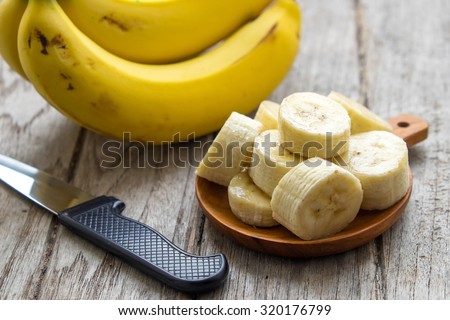Bananas are tropical fruits which are pleasant tasting and easy to digest. The main reason why many people love eating bananas! They have very many nutrition and health benefits. Nutrition experts believe that bananas benefit humans in the following ways:
Regular Bowel Movement: Because of insoluble fiber which eating a banana each day helps introduce into your digestive tract, waste moves through it easily for elimination. That enables you to have more regular bowel movements because the waste becomes soft and easy to pass out.
Weight Loss: If you want to lose weight, try eating bananas to fill up instead of fatty foods and carbohydrates. They are pleasant tasting, easy to digest and not fattening.
Blood Pressure: Bananas are low in sodium but high in potassium, hence they help in maintaining a healthy blood pressure.
Heart Health: The fiber, potassium, vitamin C and B6 content in bananas generally support heart health. Health experts believe that an increase in potassium intake along with a decrease in sodium intake is the most important dietary change that a person can make to reduce their risk of cardiovascular disease.
Reduced Risk of Stroke: High potassium intake which eating bananas provides is associated with a reduced risk of stroke. There is also evidence that potassium intake helps in the protection against loss of muscle mass, preservation of bone mineral density and reduction in the formation of kidney stones. Great health benefits no doubt.
Asthma Prevention: Eating a banana a day helps prevent people particularly children from developing asthma.
Cancer Prevention: As a good source of vitamin C, bananas can help combat the formation of free radicals known to cause cancer. High fiber intakes from bananas and other fruits/vegetables are associated with a lowered risk of colorectal cancer.
Good Vision: Regular eating of bananas helps to keep your eyes healthy. This is because bananas have a small amount of vitamin A, a fat-soluble vitamin which is a vital nutrient for healthy eyes and good vision. The alpha-carotene and beta-carotene nutrients your body receives from bananas are largely responsible for converting vitamin A which helps eye health.
Treatment of Diarrhea: Nutrition experts recommend bananas as one of the bland foods for treating diarrhea. Bananas are a quick and reliable source of electrolytes like potassium which the body loses in large quantities during bouts of diarrhea. Eating bananas enables sufferers regain strength fairly quickly from the weakness experienced from fluid losses occasioned by bouts of diarrhea.
Regular Bowel Movement: Because of insoluble fiber which eating a banana each day helps introduce into your digestive tract, waste moves through it easily for elimination. That enables you to have more regular bowel movements because the waste becomes soft and easy to pass out.
Weight Loss: If you want to lose weight, try eating bananas to fill up instead of fatty foods and carbohydrates. They are pleasant tasting, easy to digest and not fattening.
Blood Pressure: Bananas are low in sodium but high in potassium, hence they help in maintaining a healthy blood pressure.
Heart Health: The fiber, potassium, vitamin C and B6 content in bananas generally support heart health. Health experts believe that an increase in potassium intake along with a decrease in sodium intake is the most important dietary change that a person can make to reduce their risk of cardiovascular disease.
Reduced Risk of Stroke: High potassium intake which eating bananas provides is associated with a reduced risk of stroke. There is also evidence that potassium intake helps in the protection against loss of muscle mass, preservation of bone mineral density and reduction in the formation of kidney stones. Great health benefits no doubt.
Asthma Prevention: Eating a banana a day helps prevent people particularly children from developing asthma.
Cancer Prevention: As a good source of vitamin C, bananas can help combat the formation of free radicals known to cause cancer. High fiber intakes from bananas and other fruits/vegetables are associated with a lowered risk of colorectal cancer.
Good Vision: Regular eating of bananas helps to keep your eyes healthy. This is because bananas have a small amount of vitamin A, a fat-soluble vitamin which is a vital nutrient for healthy eyes and good vision. The alpha-carotene and beta-carotene nutrients your body receives from bananas are largely responsible for converting vitamin A which helps eye health.
Treatment of Diarrhea: Nutrition experts recommend bananas as one of the bland foods for treating diarrhea. Bananas are a quick and reliable source of electrolytes like potassium which the body loses in large quantities during bouts of diarrhea. Eating bananas enables sufferers regain strength fairly quickly from the weakness experienced from fluid losses occasioned by bouts of diarrhea.



